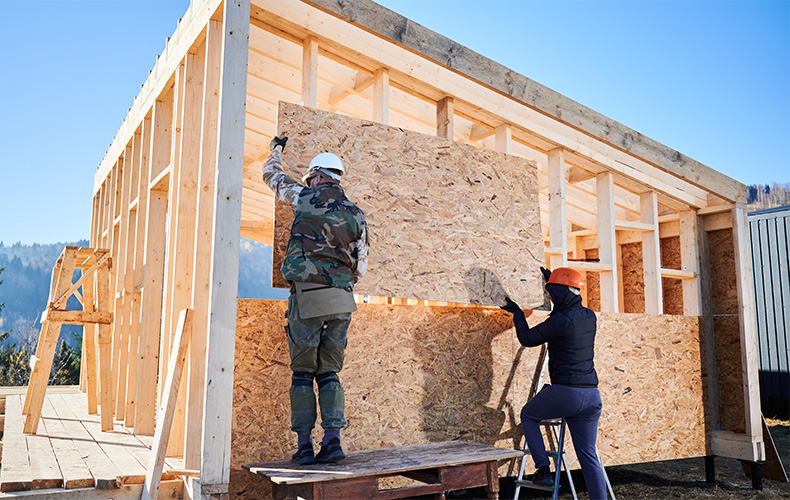OSB (Oriented Strand Board) is one of the most reliable and cost-effective sheet materials for both DIY and trade projects. It’s strong, versatile and widely used across UK homes for flooring, roofing, walls, garden buildings and general structural work. But with different grades, thicknesses and types available, choosing the right OSB board can feel confusing if you’re not familiar with the differences. This guide breaks everything down so you can pick the best board for your project with confidence.

Choosing the Right Thickness
OSB boards come in multiple thicknesses, and using the right one ensures a safe and stable finish.
9mm – 11mm
Best for non-load-bearing applications such as shed walls, lightweight panels or general sheathing.
15mm
Suitable for certain roofing applications, depending on joist spacing.
18mm
A popular choice for flooring, loft areas and roofing where strength and stiffness are needed.
22mm
Used when extra rigidity is required, often for flooring over wider joist spans or in high-traffic areas.
As a rule of thumb:
- Floors: 18–22mm
- Roofs: 11–18mm depending on spacing
- Walls/Sheathing: 9–11mm
Where OSB Is Commonly Used
Loft Flooring
OSB3 is often used as an alternative to loft panels for loft flooring. It’s strong, handles temperature changes well and lays flat with the right fixings.
Roof Decking
OSB3 is widely used under felt or membrane roofs due to its moisture resistance.
Internal Walls
OSB3 can be used for stud walls, depending on moisture levels.
Garden Buildings
Sheds, workshops and summerhouses often use OSB3 for both walls and roofs.
Quick Tips for Working With OSB
- Let the sheets acclimate for 24–48 hours before fitting.
- Leave a small expansion gap (around 3 mm) between boards.
- Use the correct screws for a firmer, longer-lasting fix.
- Support edges properly when laying flooring.
- Wear a dust mask when cutting or sanding.
FAQs
Is OSB stronger than plywood?
Both materials are strong, but OSB often has more uniform strength due to its layered strand structure. It’s also more affordable for many projects.
Can OSB be painted?
Yes. Use a suitable primer first to help the paint bond properly.
Can OSB be used outside?
OSB3 can be used in outdoor-connected areas, but it must be protected with cladding, felt or other weatherproofing treatments.
Do I need to seal OSB edges?
For roofing and humid spaces, sealing the edges can help prevent swelling.
Is OSB safe for interior use?
Yes. Modern OSB boards meet strict emission standards and are widely used in UK homes.
Choosing the right OSB board helps your project last longer, feel sturdier and meet UK building expectations. With the right grade and thickness, OSB is a dependable choice for everything from loft upgrades to garden builds.





























































































